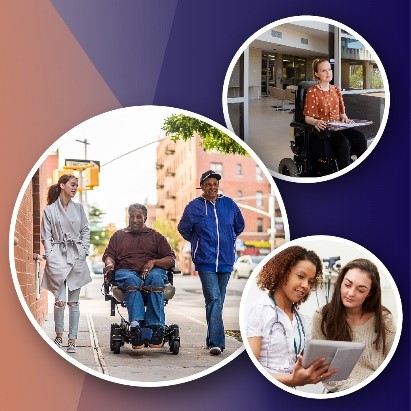
“The problem isn’t that I can’t get into a lecture theatre, the problem is that the lecture theatre isn’t accessible to me.” – Professor Mike Oliver, academic and disability rights activist
Is it time to reflect on our perspectives and assumptions about disability? We can view disability through two main lenses: the medical model and the social model.
The medical model
The medical model treats disability as a problem with the person. It focuses on finding ‘cures’ rather than helping people gain independence.
The social model
The social model is a more recent way of looking at disability. It argues that the problems lie in our society or environment rather than a person.
A person who uses a wheelchair might not be able to enter a building because there are stairs at the entrance. Under a social model, ramps should already be there to make sure the building is accessible. Other social model solutions include:
- providing audio versions of textbooks for a university student with dyslexia
- offering vaccination information in Easy Read for an adult with a cognitive disability
- helping all children to show empathy and communicate in a variety of ways, rather than expecting a child with autism to make all the adjustments.
Barriers people with disability face
Barriers stop people from doing the things they want or need to do.
The four types of barriers the Australian Federation of Disability Organisations lists are:
- attitudes
- environments
- institutions
- communication.
We create attitude barriers when we only see the disability and not the person. This can lead to bullying or discrimination.
Narrow doorways and poor lighting are examples of environmental barriers.
Institutional barriers occur where laws or policies discriminate against people with disability. This might happen when high school students must submit a handwritten assignment. This might discriminate against a student with a disability that affects mobility.
Communication barriers include:
- complicated messages that might be inaccessible to people with a cognitive disability
- written messages that might be inaccessible to people with a vision impairment
- auditory messages that might be inaccessible to people with a hearing impairment.
The social model views barriers as a problem with society. It places responsibility for removing barriers on communities. When the barriers are removed, it is easier for people with disability to be independent and take part in society. So, the social model is often a better way of promoting inclusivity.


